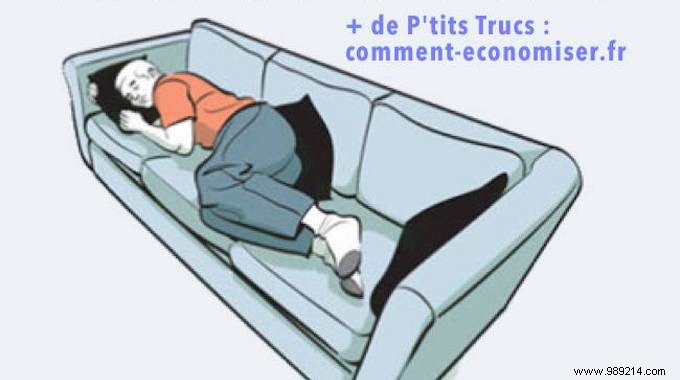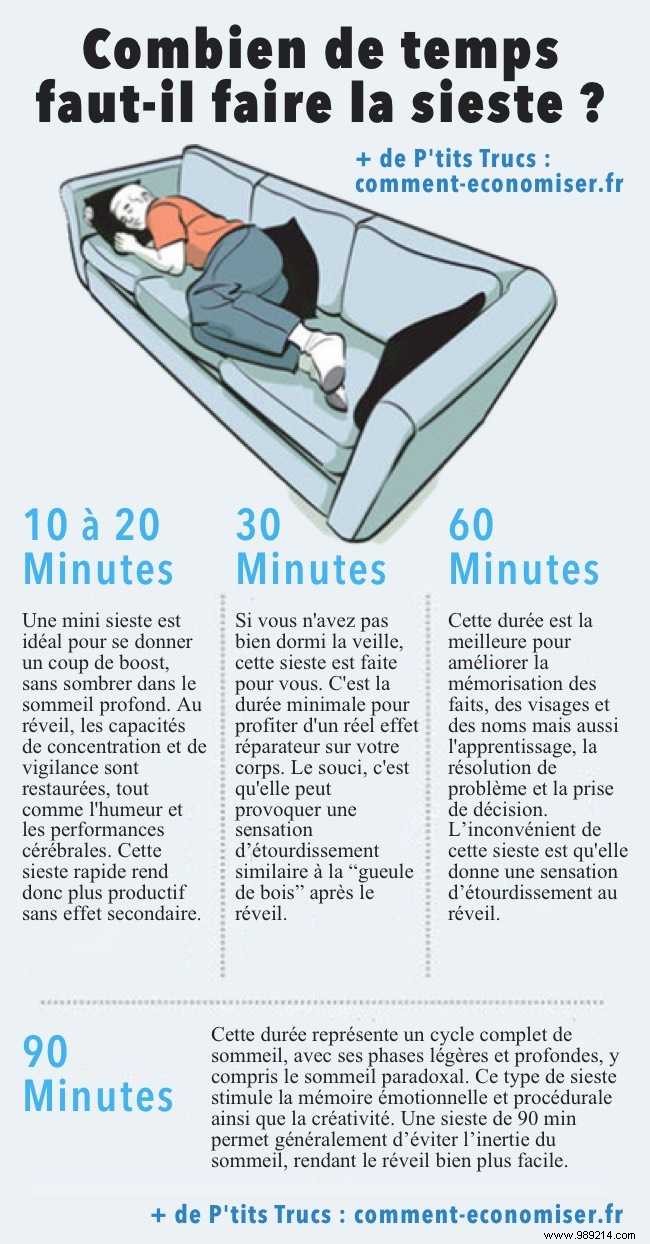
It is often said that taking a nap is like rebooting your brain !
The problem is that choosing the duration a nap is not so easy.
Fortunately, this guide will help you choose the length of your nap so that it is really effective.
Yes, for a nap to be restorative, it is essential to choose for how long you go to sleep.
Look at this guide, it's very simple:

According to sleep experts, the ideal length of a nap is 10 to 20 minutes .
But depending on what you actually need, a slightly longer nap might be better suited. Explanations:
You want a boost quick ? Experts say a short nap of 10-20 minutes is ideal for getting back to work without wasting time.
Indeed, a mini nap helps to avoid falling into deep sleep and thus facilitates waking up gently.
Upon awakening, concentration and alertness abilities are restored, as are mood and brain performance.
This quick nap makes you more productive with almost no side effects.
In addition, this type of nap has the advantage of not requiring a comfortable place to take it.
A simple armchair, a car seat or a sofa is enough! You don't even have to undress or put on pajamas.
Didn't sleep well the night before because of a baby or a late night? Experts recommend a 30 minute nap .
Indeed, half an hour is the minimum duration for the nap to have a real restorative effect about lack of sleep.
The downside to this type of nap is that this length of sleep can potentially cause sleep inertia.
What is sleep inertia? Also called confusional arousal or sleep drunkenness, this is a period when alertness decreases.
In other words, you seem awake, but you may have memory deficits and disorientation in time and space.
Not great, if you have an important meeting right after!
To significantly improve brain performance , experts recommend a nap of 60 min.
Why ? Because a one-hour nap improves your ability to memorize facts, places and faces.
But not only that, it also speeds up reasoning, learning, problem solving and decision making.
On the other hand, this type of nap has a disadvantage:waking up is more difficult than for a mini nap.
Indeed, when you wake up from a 60-minute nap, like a 30-minute nap, you feel like you're dizzy.
This sleep inertia is similar to a “hangover” and can last up to 30 minutes after waking up.
Fortunately, after this time of adaptation, you will quickly begin to feel the restorative benefits of this type of nap.
A long nap of 90 min usually results in a full cycle of sleep.
This includes the light and deep phases, including that of REM sleep closely related to dreams.
This nap duration stimulates emotional and procedural memory, the one needed to, for example, learn to play the piano.
It also has the power to stimulate your creativity . Very handy if you are a graphic designer, for example!
The big advantage of this nap is that it usually helps to avoid sleep inertia.
As a result, waking up is much easier and faster than for 30 or 60 minute naps.
If you have decided to take a nap, there is a trick to avoid falling into deep sleep.
The trick is to sleep in a slightly reclined position. during your nap, instead of sleeping completely flat.
Moreover, if you start dreaming during a short nap, it is surely a sign that you are late for sleep.
In France, the siesta is still badly perceived, because it is synonymous with laziness.
It's a shame, because when you take a nap, you enjoy its many benefits that few people know about. Which ones?
Well, the nap, whether short or long, reduces cardiovascular accidents. And of course, it allows you to be in better shape and above all more productive at work.
It is for this reason that in Japan, some companies have dedicated nap rooms for their employees. Makes you want to, doesn't it?
When will we have nap rooms, in addition to meeting rooms, in our companies in France? Anyway, I can't wait :-)